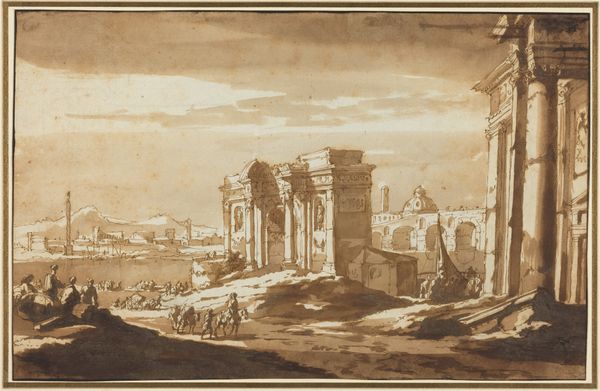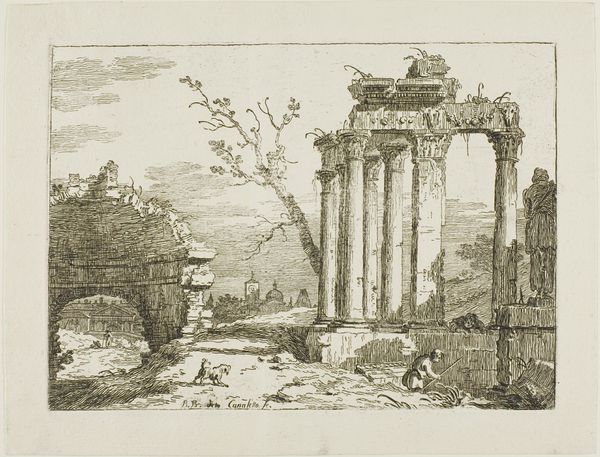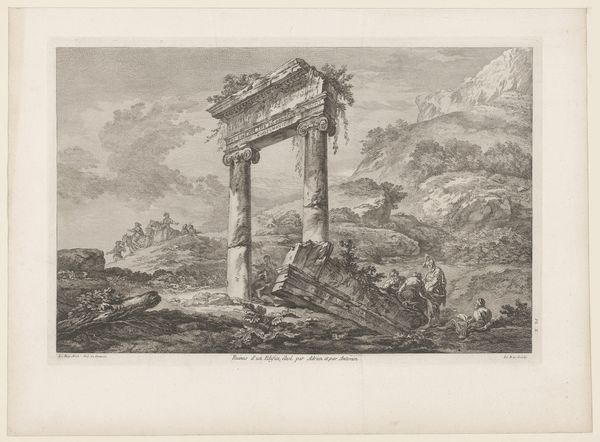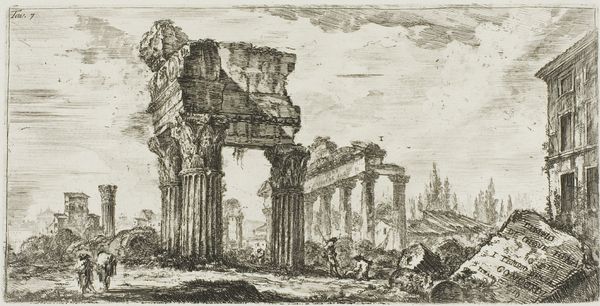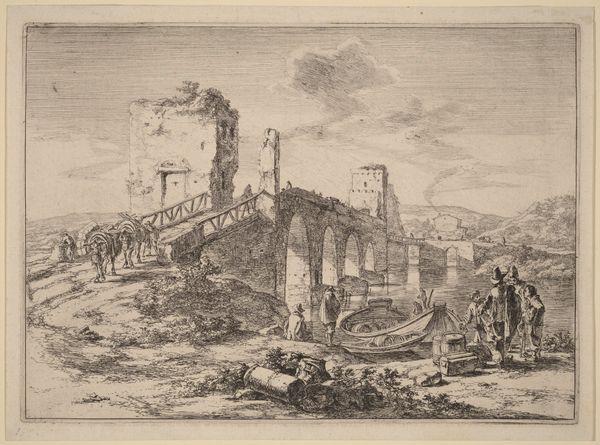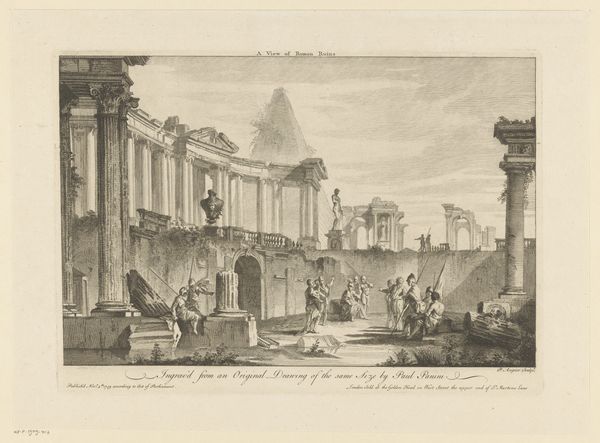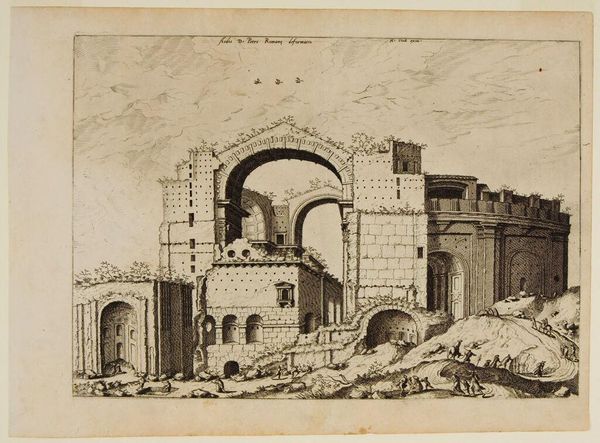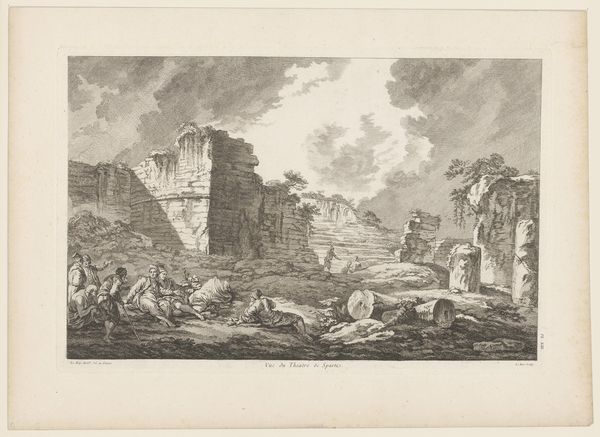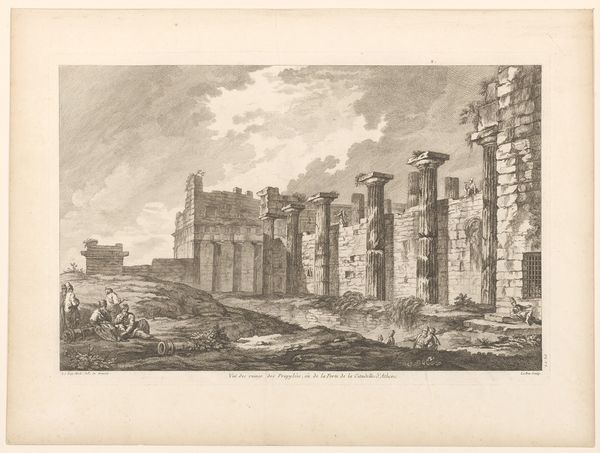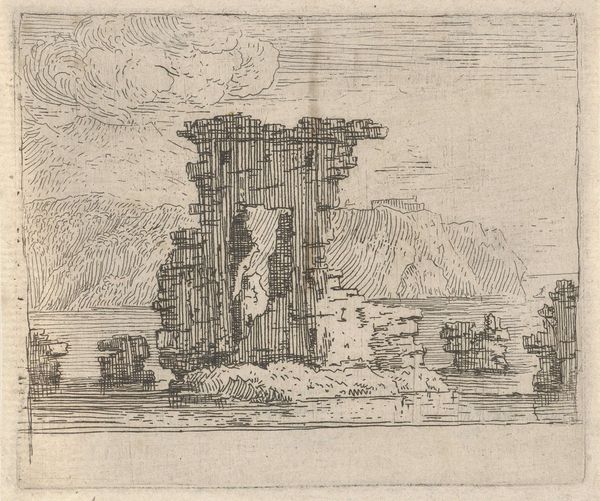
print, etching
#
baroque
# print
#
etching
#
landscape
#
geometric
#
line
#
cityscape
#
history-painting
#
realism
Dimensions: 205 mm (height) x 320 mm (width) (bladmaal)
Editor: This is "Hyrder i et ruinlandskab," or "Shepherds in a Ruined Landscape," by Albert Meyering, created sometime between 1645 and 1714. It's an etching. What strikes me is the contrast between the crumbling architecture and the everyday life of the shepherds. What do you see in this piece? Curator: I'm immediately drawn to the process of its creation. This print, likely one of many pulled from a single etched plate, speaks volumes about the economics of art in Meyering's time. It makes art more accessible, allowing for wider consumption. Consider the labour involved: the craftsman meticulously etching the image onto the metal, the printers producing the image. Does the mass-production cheapen the original artistry, or democratize it? Editor: That's a fascinating perspective. I hadn't considered the printmaking process itself as a commentary. It also makes me think about who the intended audience was. Curator: Precisely! Was it meant for wealthy patrons seeking picturesque views, or for a broader market hungry for affordable depictions of classical grandeur? The ruins themselves, meticulously rendered, hint at a society grappling with its relationship to the past, and the cost, literal and figurative, of empire. Where did Meyering get his materials? How did he learn to etch? These are the kind of questions a materialist approach pushes us to ask. Editor: So, it’s not just about what the image depicts, but how it was made and distributed. Curator: Exactly! Think about the copper used for the plate, the ink, the paper - these were all commodities, embedded within complex trade networks. The very existence of this print tells a story about the economic and social conditions that allowed its creation. Editor: That gives me a lot to think about – I had been thinking just of ruins and shepherds! Curator: It’s easy to get lost in the pretty landscape, but that’s precisely what this kind of art invites us to consider beyond it.
Comments
No comments
Be the first to comment and join the conversation on the ultimate creative platform.
